The most beautiful home flowers and features of their cultivation
The variety of types of indoor plants makes it possible for everyone to choose a plant to their liking. But of the beautiful flowers, many require effort, time and attention. Having got acquainted with some representatives of indoor plants for decoration, one cannot resist their unusual appearance.
In temperate latitudes, summer gives a person little time to enjoy flowering plants, which is why bright tropical crops are grown on windowsills. Most often, there are specimens with bright unusual colors. But the structure of many indoor crops is so original that it is simply impossible to refuse to grow them.
Content:
- Gardenia - growing conditions, care
- Zephyranthes and its cultivation
- Calceolaria in home design
- Growing papiopedilum and phalaenopsis orchids
- Beauty eustoma at home
- Poinsettia: breeding methods, care
- Jacobinia: species, growing conditions
Gardenia - growing conditions, care
One of the most beautiful representatives of the Marenov family, gardenia belongs to evergreen perennials. A jasmine-like type of plant is grown at home. It has the shape of a small tree or bush. Appreciate gardenia for decorativeness. Fragrant flowers appear against the background of dark green foliage, which, opening up, are ten centimeters in diameter. There are species with double and simple petals. Their color is usually white or cream.
The flower is capricious in terms of growing conditions, preferring:
- good illumination without the scorching rays of the sun
- air temperature in summer at 20 degrees Celsius
- no drafts
- watering with clean, filtered water
- regular shower
- micronutrient feeding every week
Gardenia care includes transplanting the plant into a larger container as the flower matures. To maintain the shape of the tree, the tops are trimmed, stopping the growth in height. Dried buds, damaged branches are constantly removed. It is better to cut off strongly overgrown shoots in time.
Gardenia is propagated by cuttings, which are left after pruning. First, they are rooted in a container of water, and then planted in pots. Without gardenia, the house will appear dull and dull.
Zephyranthes and its cultivation
Flowers zephyranthes outwardly similar to water lilies... They are also called an upstart for the swiftness of the appearance of buds. The flower pleases the eye for only two days, and then dies off. But new ones come in his place, and this happens for two months.
The plant belongs to bulbous perennials. Its narrow leaves reach a length of thirty centimeters. In spring, zephyranthes pleases with the delicate color of their flowers - pink, purple, yellow or white. You can plant bulbs of several types of plants in one pot, then flowers of different colors will delight the eye for a long time.
The abundance of flowering zephyranthes depends on the care of the crop.
Zephyranthes perfectly adapts to growing conditions.He does not need bright light, he loves partial shade. For better flowering, the plant needs constant soil moisture and an air temperature of 18-23 degrees. Watering the flower is usually organized through the pallet.
Zephyranthes is dormant in winter, so the pot can be placed in a shaded area. The upstart is watered less often during this period. Planting zephyranthes is carried out in early spring. There should be a drainage layer in the pot, and the soil substrate should consist of humus, turf and sand. Before planting, the bulbs are placed in a fertilizer solution. After burying them in the ground, they are watered with the same solution.
Calceolaria in home design
Unusual plants are always occupied by lovers of indoor floriculture. Calceolaria will decorate with its bright shoes of flowers the rooms, where the air temperature is low. The flowers of the plant are unique in their structure. Similar to swollen bubbles of white, yellow color with two lips: the upper one is large, and the lower one is imperceptible. From above, their surface is covered with spots and dots of red color. For a month of flowering, one plant will accommodate up to fifty shoes.
But in order for the flowers not to fall off, the air temperature in the room should not be higher than 16 degrees Celsius. Calceolaria pots are placed on the windowsills of the northwest or north, east side of the house. In addition to low temperatures, the plant prefers high humidity in the air and soil. This can be achieved by pouring water into the pan or placing wet pebbles there. Water the flower so that moisture does not get on the pubescent leaves. Flower petals are not afraid of her.
The disadvantage of growing calceolaria is the short life of the plant.
As soon as it fades, it is destroyed. And calceolaria seeds are planted in the nutrient soil. Another way to prolong the life of a beauty is to place a completely cut plant along with a pot in a dark, cool place. Put them on the windowsill when young growth begins to appear. The beauty of calceolaria is fleeting, but it can only be repeated with the diligence of a florist.
Growing papiopedilum and phalaenopsis orchids
This type of orchid is called the Lady's slipper because the lower lip of the paphiopedilum is similar to the toe of a lady's shoe. The name also contains the name of the goddess. The stem of the plant is shortened, and the wide leaves are collected in a double-sided rosette.
There are several varieties of the papiopedilum orchid, differing in the color of the leaves.
In some they are pure green, in others they are covered with a marble pattern. The flower's lips have an original color: yellowish-green petals with reddish veins. In some, the sepals have a white border on top.
All you need to know about growing a plant:
- The conditions for flower growth are selected taking into account the fact that the orchid needs diffused light without the scorching rays of the sun. And the air temperature should not be too high or too low. Enough 18-24 degrees above zero.
- There are both cold-resistant and thermophilic types of Venus slipper. The plant does not tolerate temperature fluctuations of more than three degrees.
- Pafiopedilum does not have a dormant period, so orchids are watered year-round with warm, settled water. In order not to overdo it, moisturize as the topsoil dries out. Orchid loves spraying with water, airing the room.
- The flower should be repotted every 2-3 years after it has stopped flowering. In wide pots, a coarse substrate is laid down, and closer to the surface - a small, moisture-permeable one. Lay on top sphagnum moss.
- The methods of reproduction of orchids include vegetative, by dividing the stem. In this case, three shoots are left in each part. First, the cuttings are rooted in the soil mixture, and then they are transplanted into a permanent pot.
Breeding orchids phalaenopsis , translated as butterflies, has long been commonplace. The beauty needs abundant lighting without direct sunlight, does not tolerate temperature extremes.Ovaries and flowers are better formed when the room temperature is 20 degrees Celsius, and the humidity is not more than 70 percent.
Phalaenopsis is watered and fed like other orchids reasonably, no frills. To make flowers appear on the stems faster, wilted ones are cut off. Orchids are a real decoration for any home.
Beauty eustoma at home
Eustoma, a native of Mexico, is called the Texas bell, the Japanese rose, and the Lisianthus. The flower is grown both in the garden and at home. Breeders have developed new plant varieties that are completely different from their wild counterparts.
Decorative eustoma in green leaves, covered with a bluish bloom, in buds that open alternately. The flowers resemble a rose with a large funnel-shaped blue cup. Up to thirty flowers are located on one bush, forming a magnificent bouquet. In addition to blue, the petals are also painted in purple, lilac, violet, white tones. There are varieties with two-color petals.
The height of the eustoma at home reaches twenty centimeters, although there are specimens in the meter.
The large-flowered species of Lisianthus are appreciated, but some prefer miniature roses arranged in a spiral on the branches. The plant blooms in the winter months, then retiring.
Eustoma prefers well-lit places, so it is placed on the south side. If in winter the flower lacks light, then fluorescent lamps are connected, extending the daylight hours to twelve hours. Also, the plant loves warmth when the air temperature rises to 20 - 25 degrees. In such conditions, the rose will bloom every year.
In order for the eustoma to develop well, it needs:
- pick up loose soil with acidity within 6.5-7.0
- organize airing
- water with settled water as the soil surface dries
- during the growing season, organize feeding every two weeks
During the rest period, the pot with eustoma is placed in a cool room, reducing watering and feeding. In the spring, buds begin to form again, and care is carried out according to the rules and regularly.
The flower can be propagated by seeds, which are laid out on moistened ground. From above it is necessary to cover the planting with a film. After germination of seedlings, two weeks later, they are engaged in watering the shoots, spraying with Fundazole solution for the prevention of diseases. Two months later, the matured seedlings are placed in separate containers. The eustoma is treated with tenderness, trying not to damage the fragile roots during transplantation. Plant care is the same as for saintpaulias.
Poinsettia: breeding methods, care
The Euphorbia family gave us poinsettia, an evergreen shrub from Central America. Indoors, the bush grows up to forty centimeters high. On slender stems, elliptical-like dark green leaves with jagged edges. In winter, in Christmas frosts, poinsettia blooms in small yellowish rosettes on the windowsills. Bracts grow around them more often of a bright red tone, although yellow, pink, and white are also found.
The poinsettia is planted with cuttings ten centimeters long. Each branch should have four to six buds. The shoots are freed from the poisonous juice by placing them in warm water for half an hour. After treatment with a growth stimulant, the cuttings are buried in moist soil. For rapid germination, cover with foil and put containers in a warm, well-lit place. After a month, the poinsettia will take root, then it is transplanted into pots with a diameter of twenty centimeters.
How to care for a flower:
- Euphorbia is watered 2-3 times a week during the period of active growth and flowering. Water is taken warm, well-separated.
- Since spring, poinsettia is fed mineral complexes.
- It is recommended to transplant a shrub in mid-spring, when the pot becomes small for the plant. A drainage layer is laid at the bottom of the container, filled with soil consisting of turf, peat and sand.Transfer the bush carefully, keeping the remains of the earth on the roots.
- When the poinsettia begins to shed its leaves, watering is stopped. The stem is cut, leaving branches of fifteen centimeters. The pot with the plant is placed in a dark place until spring.
Competent care of poinsettia is the key to the quality development of a houseplant.
Jacobinia: species, growing conditions
The second name of Jacobinia is justice, and the plant belongs to the Acanthus family. A perennial is found in the wild in South American countries.
The main features of the plant:
- The shrub reaches a height of one and a half meters.
- Straight stems, semi-lignified, have reddish nodes.
- On the branches, oblong-oval leaves of green or variegated color are located opposite.
- Tubes of flowers, two-lipped or single, are collected in ears. The stems are decorated with bracts of yellow, red, orange, white tones.
There are types of Jacobins by the type of inflorescences and their location:
- Jacobinia Brandege has pubescent leaves, matte green, forming a beautiful patterned crown. The inflorescences consist of two-lipped tubular flowers hidden in the axils of the bracts, similar in structure to hop cones. Small flowers of meat-red Jacobin form a bright pink or white, yellow roundness five centimeters long. The bracts of the species are elongated, bifurcated in half, sticky to the touch.
- Yakubinia Gresekhta, a shrub a meter tall, is characterized by branched shoots with leathery oval leaves. Flowers on short petioles are visible at the tops of the axillary shoots. They consist of a red corolla and lips: the upper one with two lobes and the lower one with three. The pharynx of the flower is covered with cilia.
Jacobinia is grown from seeds and cuttings. Propagated by shoots from January to spring. First, the cuttings are rooted, and then they are planted in individual pots. In July, the established shoots can bloom.
For justice, it is necessary to maintain a diffused bright light, an air temperature of 20-25 degrees.
In winter, it is reduced to 16 degrees Celsius. To stimulate the flowering of Jacobinia, you need coolness, high humidity. The pots are placed in pallets, where wet pebbles or moss are applied.
Water the plant abundantly with spraying of the leaves. The flower is fed every ten days. It is possible to enhance the formation of new shoots by pruning, leaving 2-3 internodes on the stems. Jacobinia is transplanted as needed in early spring, picking up a large container. One of the most beautiful original plants for the home, Jacobinia will develop quickly with proper care.
More information can be found in the video:



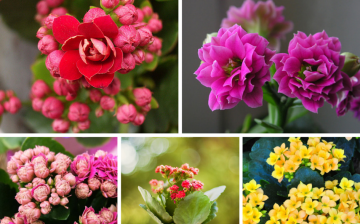
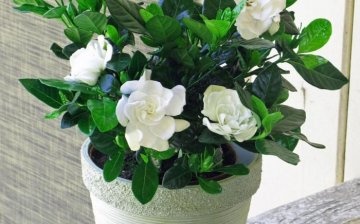

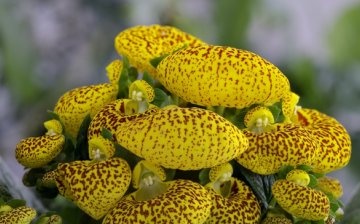


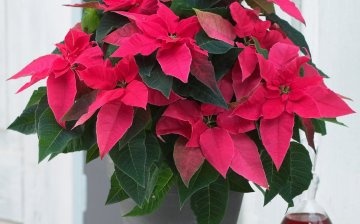
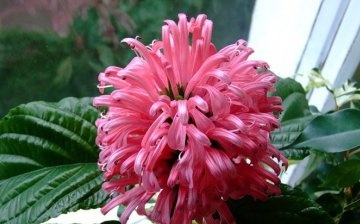








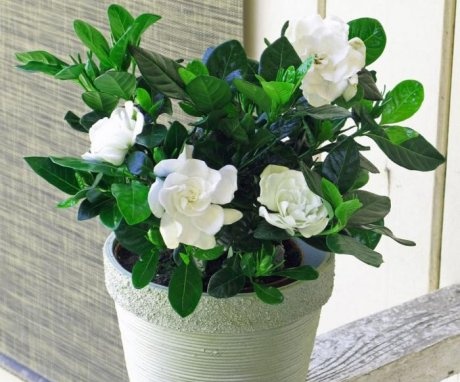
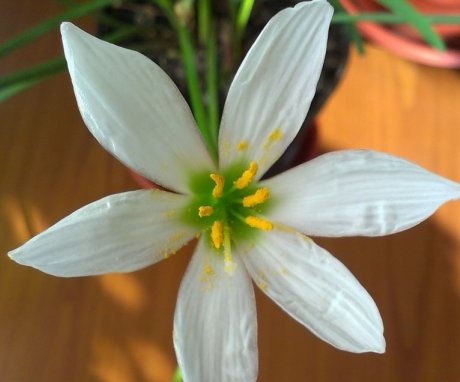
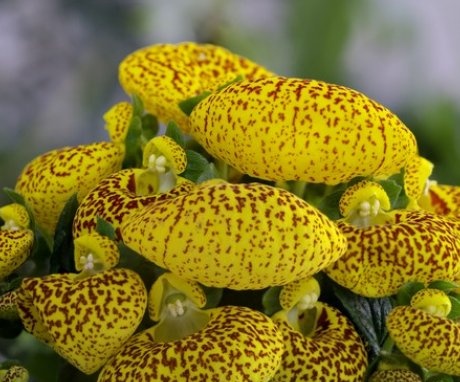
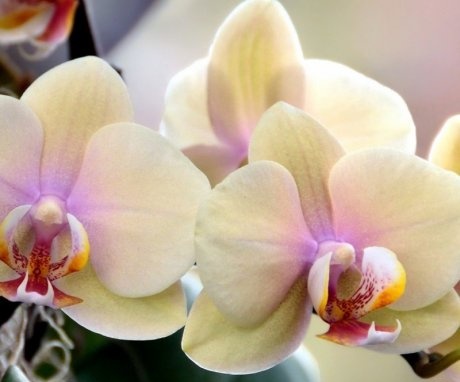
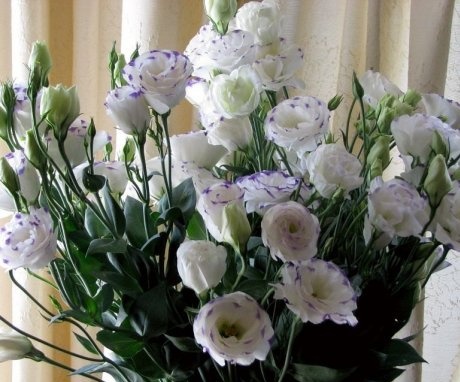
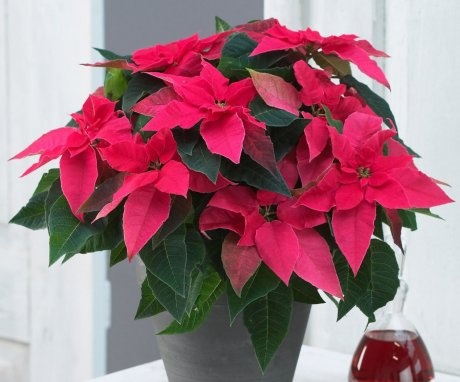
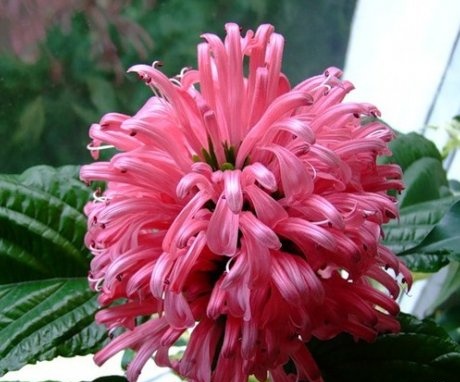
Cultivated only poinsettia and phalaenopsis from the listed ones. Phalaenopsis is a very grateful and beautiful flower with proper care. The eustoma is very beautiful, I even wanted to get such a flower.
And we really like the lily. It is very beautiful both in the greenery of large, succulent leaves, and in bloom. Yes, and practically does not require care, as it is very unpretentious. It is enough to water, feed and rinse the flower under the shower once a year. For the leaves are large!